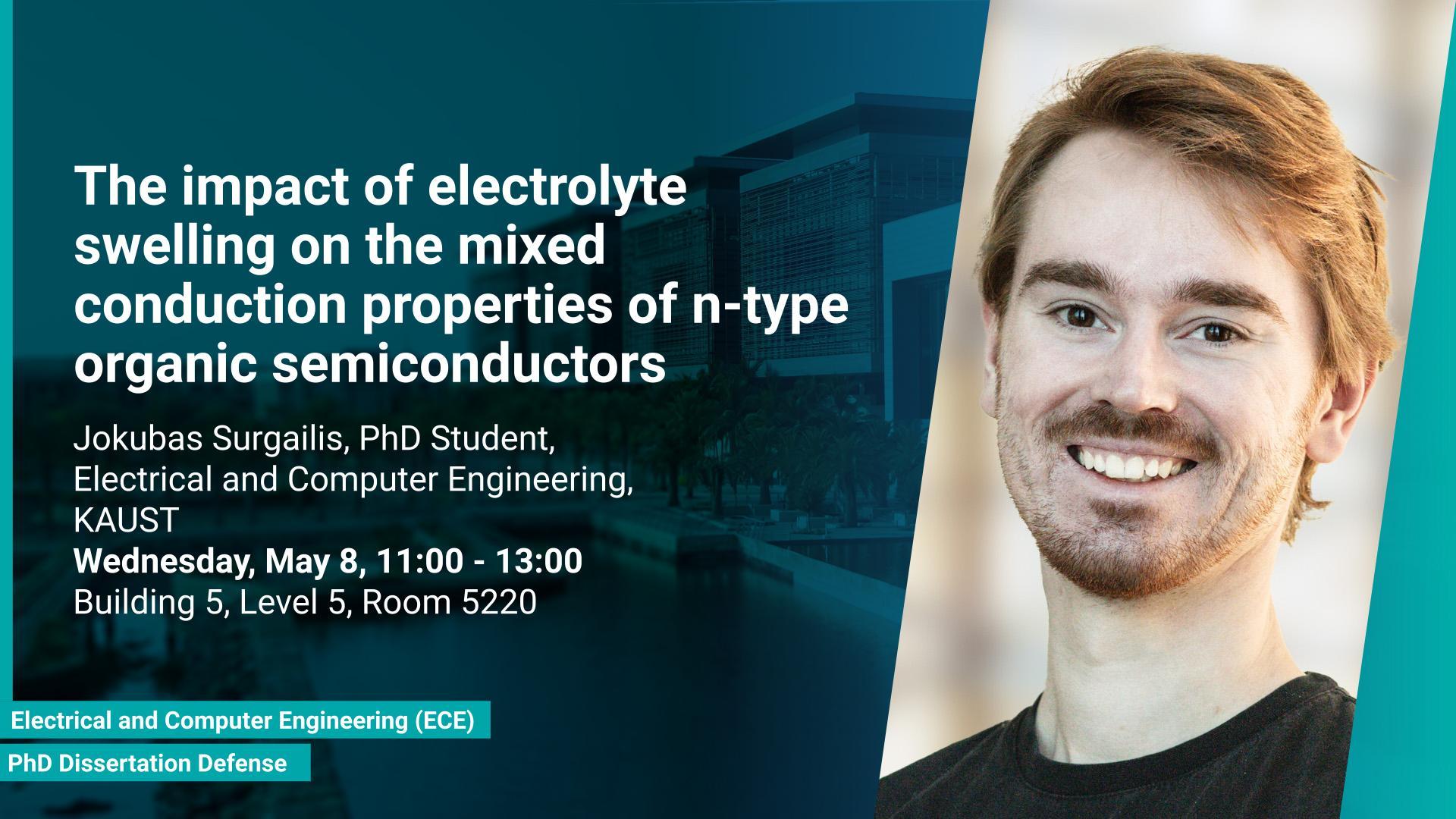Event Start
Event End
Location
Abstract
Organic mixed ion-electron conductors (OMIECs) have found themselves in the spotlight of the bioelectronics field because of their potential to bridge the gap between the worlds of biology and electronics. From the initial discovery of conductive polymers just a few decades prior, the evolution of OMIECs has been growing exponentially. Beyond the unique capability to facilitate ionic and electronic charge transport simultaneously, OMIECs exhibit other enticing properties for energy, computation, and healthcare technologies.
However, despite the ever-increasing interest in the use of these materials in functional devices, the full puzzle of OMIEC transport properties remains to be put together. One of the main missing pieces is the understanding of the doping and dedoping of electron-transporting (n-type) OMIECs in aqueous electrolytes, how they maintain stability in ambient conditions, and why the performance of n-type devices, e.g., electrochemical transistors falls shorter than the hole-transporting (p-type) counterparts. The efforts to understand the n-type OMIECs initiated research that has focused on new materials synthesis and characterization, helping to broaden our understanding and narrow the gap between n-type and p-type device operation performance. Nevertheless, a number of fundamental questions remain to be answered.
In this thesis, I delve into these questions and design experiments to understand what drives and what halts transport properties of a few representative n-type OMIECs and the performance of their devices, specifically, the organic electrochemical transistor (OECT) gated with aqueous electrolytes. I begin by investigating how the absence of hydrophilic groups in the polymer structure can, unexpectedly, enhance n-type OECT performance by comparing two n-type polymers: one with side chains and one without. I then move on to probe deeper into the role of side chains, to see how they can enhance, but also diminish the operation of n-type OECTs when they are above a certain percentage in the polymer structure, by investigating a series of polymers,
comprising the same backbone, but varying lengths of side chains. In all of these cases, I find one common polymer property that plays a major role in mixed conduction performance, that is, the swelling of the film during device operation and the concomitant irreversible changes that the film structure undergoes. Finally, I investigate how the changes in polymer-electrolyte interactions and the resulting swelling change the type of electronic species the film generates, by manipulating how much water permeates the n-type polymer films and inspecting the ensuing changes in fundamental OMIEC properties and their correlation to the microstructure.
Brief Biography
- 2018 - 2024: PhD student, Organic Bioelectronics Lab, KAUST, Thuwal, Saudi Arabia
- 2017: Visiting student, Organic Bioelectronics Lab, KAUST, Thuwal, Saudi Arabia
- 2015: Summer internship, Cairn Solutions, Paisley, UK
- 2013 - 2018: Master’s student, University of Glasgow, UK


